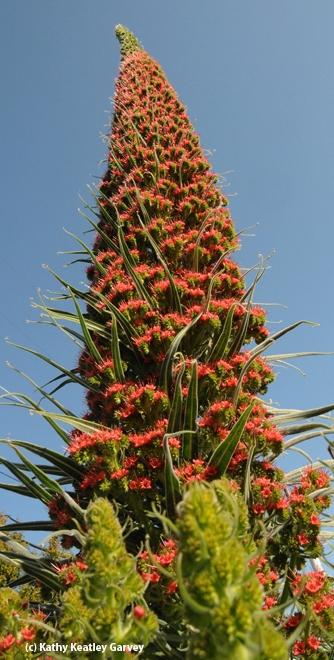
This spectacular plant attracts bees like a honey-laden hive does hungry bears.
The tower of jewels (Echium wildprettii), native to the Canary Islands, is a biennal; it flowers only in the second year and then dies. So, for the first year, it looks quite insignificant. The second year: it shoots up an amazing nine or 10 feet, ablaze with blossoms the color of rubies.
If you ever see a tower of jewels blooming, you'll remember it. One bloomed last year in the Storer Garden in the UC Davis Arboretum. it drew scores of visitors toting cameras.
The same will hold true when several towers bloom next year in the Häagen-Dazs Honey Bee Haven, a half-acre bee friendly garden planted last fall next to the Harry H. Laidlaw Jr. Honey Bee Research Facility, UC Davis.
Visitors to the haven will see the "tiny" Echiums during the public opening on Sept. 11. They won't see the regal beauty unfold until 2011.
Meanwhile, we're savoring the three towers in our own bee friendly garden. So are the honey bees, hover flies, bumble bees, carpenter bees, butterflies and hummingbirds.
The scouts (bees) arrive as soon as the temperature hits 50 degrees. Then they head back to their hives to alert the foragers. You can almost hear them Waggle-Dancing: "Fine quality, large quantity--hurry, hurry!" By mid-morning, the towers are abuzz with bees. By mid-afternoon, the bees sound like jet engines.
A tower of bees.
Attached Images:


